How to Grow and Use Aloe Vera
Everyone needs an aloe vera plant on the kitchen window, close to the stove. Aloe is renowned for its ability to cool and heal a burn. And for that reason alone, you should keep one as a plant ally. But did you know that aloe has other uses as well?
Aloe is a “first aid kit in a plant” according to Rosemary Gladstar. [3] Externally aloe vera gel is useful for skin irritation, wounds, scratches, and bedsores, as well as burns. It is also used in hair tonics for its reputation as a hair growth stimulant. Internally, the fresh gel is used to soothe ulcers and as a laxative.
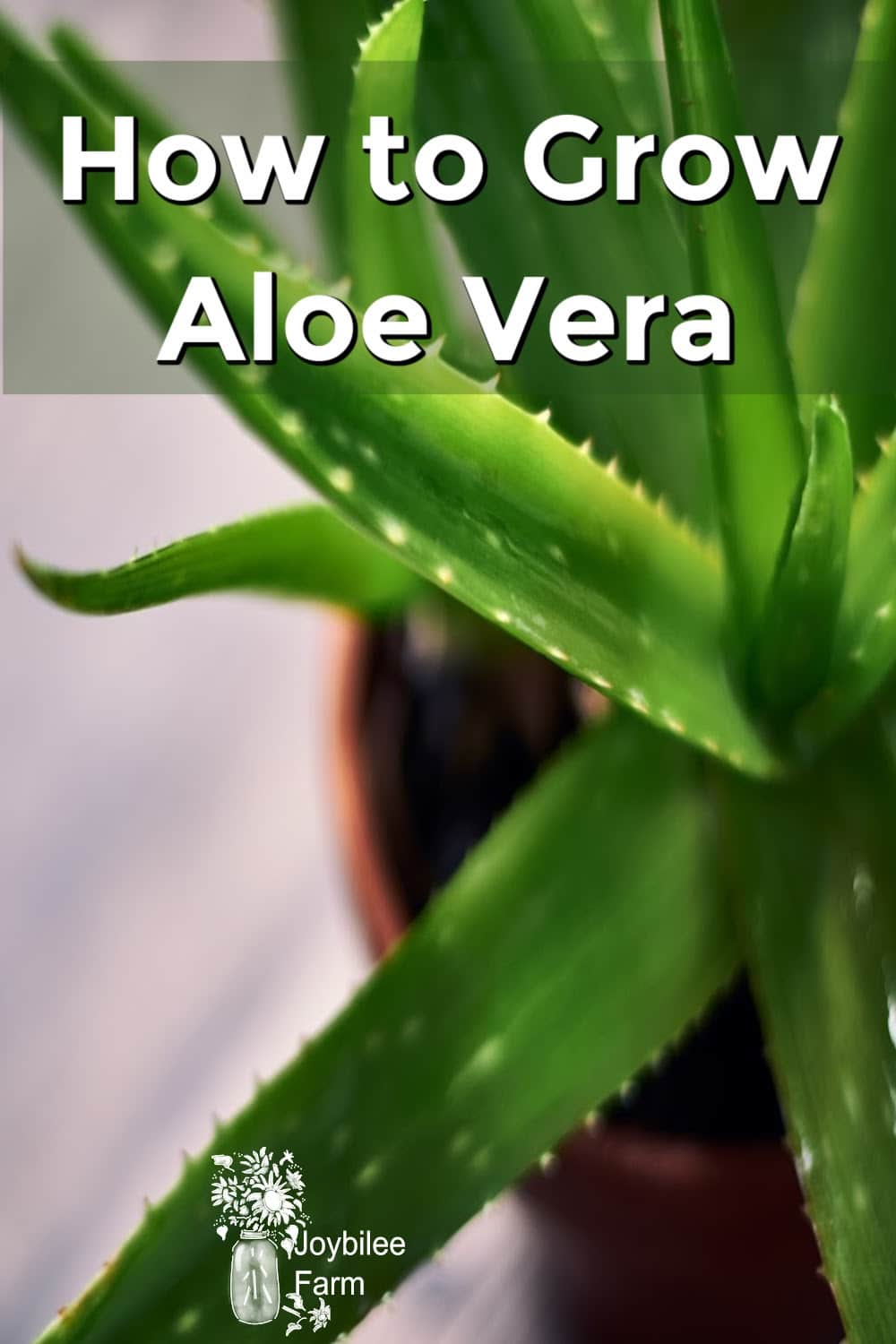
How to grow aloe vera
Aloe is a tender perennial. If you live in areas that do not receive winter frost, zones 9 to 11, aloe may be grown directly in the ground. Provide the plant with partial shade and well-drained, somewhat fertile soil. Allow three feet between plants, to allow them room to spread.
Avoid overwatering. Aloe will flower if given enough room to grow, with adequate light and fertility. Here in Canada, we miss this miracle.
If you live in zones 8 or below, growing aloe in a container is easy, provided that you don’t overwater it. Aloe is succulent and likes to be in a warm, sunny spot. If you grow it in a container, you can put it outside in the partial sun during the summer. Bring it indoors if the temperature will dip below 50°F. Protect it from too much rain if you live on the “wet coast”.
Aloe will also fair well grown indoors. If you have a sunny window you don’t need supplemental light in winter. When planting aloe in a pot, add some rocks in the bottom for drainage, so the roots won’t sit in water. Allow the soil surface to dry completely between watering. Then give the plant good soaking.
Many people think they can’t grow aloe vera because they don’t understand the different needs that succulents have. The leaves of aloe vera are 99% water, so the plant can withstand drought conditions. Too much water, on the other hand, will rot the roots. If you have an aloe plant that is suffering from overwatering, you may be able to bring it back through neglect.
Propagation:
Aloe vera plants make more aloe plants in two ways. If you live where your plant can grow with lots of warmth and space, your plant will reach 3 feet in height and begin to send up flowering shoots. These will produce seed, however, unless you have other aloe species plants nearby the seed may not be viable.
But the plant also sends out clones from the mother plant, called “pups” or “plantlets”. The mother aloe vera plant will get many small plantlets if given enough space. These can be separated from the plant at the root zone. Each plantlet will have its own root system and can be repotted or replanted to make new plants.
If your container-grown aloe vera gives you pups, pot them up and give them to neighbours. Aloe plants make a welcome gift.
Using the Aloe Vera Plant
There are two types of medicine in the aloe leaf. A yellow latex, close to the skin, and a clear watery gel. To use the aloe leaf medicinally you will want to separate the two medicines. Yellow latex is strong cathartic medicine. A very small amount goes a long way. The clear gel has wound healing and soothing anti-inflammatory properties.
To use the medicine harvest a leaf from the base of the plant. Slit the leaf up both sides, removing the line of white spines. Peel away the green skin. Next to the skin is the yellow latex that is high in anthraquinones. This is dried and used as a laxative and purge.
In the centre of the leaf is a clear gel. This is rich in mucilage and is 99% water. This clear juice is used to heal ulcers, lower blood sugar, treat heartburn, help with urinary tract infections and prostate irritation, improve hair growth, remove toxins, and reduce inflammation of the eyes or ears. [5] This clear gel is also the part used for burns and sunburns.
If you harvest a whole leaf by separating it from the base of the plant you can save it in the fridge wrapped in plastic for medicinal use. However, I prefer to just nip the tip of a leaf, as I need it for burns or scrapes. The pinched leaf will ooze a little juice but the latex in the leaf will cause it to seal over in a few hours. Harvested this way, a small aloe vera plant can provide first aid use for a family, for a long time.
Everyone needs a pet aloe vera pup. Consider adding an aloe plant to your plant allies this spring. I bought mine at the grocery store, in the produce section. I strongly suggest you don’t purchase your aloe plant through Amazon.
Ways to use Aloe Vera
I use aloe gel as a hair tonic and to restore hair growth. Shatul Wellness uses aloe as a mouth wash. Preparedness Mamma makes a rub for sore muscles with aloe gel, as well as an herbal shampoo. Ever Blossom has 16 additional uses for aloe that include cosmetic and first aid uses.
Aloe Materia Medica
Botanical Name and Family
Aloe spp. (Liliaceae), Aloe barbadensis miller,
Common Names:
Bombay aloe, Turkey aloe, moka, aloe vera, Zanzibar aloe
Properties:
Mucilaginous, bitter, vulnerary, laxative, demulcent, emollient, emmenagogue, astringent, hypoglycemic, [4]
Systems Affected:
Structural, digestive, skin,
Safety:
Aloes are generally recognized as safe.
Herbal Use:
Internal use of aloe was historically recommended for chronic constipation and suppressed menstruation. However, other more gentle laxatives should be used first.
An effective poultice can be made with comfrey root powder, goldenseal root powder, and aloe gel.
External use of aloe gel to treat minor burns, cuts, scrapes, and bruising. It’s a cooling sunburn remedy.
Dosage:
Historic herbals recommended a dose of 50 to 200mg of whole dried aloe juice 3 times daily. [1] If using just the dried yellow latex use no more than 10 to 30 mg. once daily.
Parts used:
Fresh leaves, dried leaf resin, gel extracted from the fresh leaves.
Constituents:
Aloe vera contains 75 potentially active constituents: vitamins, enzymes, minerals, sugars, lignin, saponins, salicylic acids and amino acids, [7] aloins, anthraquinones, glycosides, resin, fibre, vitamins A, C, and E, selenium, water (99.5%), sugars (4%), [6] saponins,
Actions:
Internal: Cathartic, vulnerary, emmenagogue, vermifuge, hepatic, bitter, cell proliferant, healer, allergy reducer, soothing to stomach ulcers, anti-inflammatory, antibacterial, anti-viral [7]
External: emollient, demulcent, vulnerary, healing to burns and radiation burns, bites, irritations, skin ulcers, anti-inflammatory, antiseptic, analgesic,
![Aloe is a “first aid kit in a plant” according to Rosemary Gladstar. [3] Externally aloe vera gel is useful for skin irritation, wounds, scratches, and bedsores, as well as burns. Internally, the fresh gel is used in to soothe ulcers and as a laxative.](https://g6c4m6d2.delivery.rocketcdn.me/wp-content/uploads/2016/02/How-to-Grow-and-Use-Aloe-Vera.jpg)
Contraindication:
Contraindicated in cases of known allergy to plants in the Liliaceae family.
Aloe should be used internally with caution and recommended doses should be followed. Aloe can cause griping pains, cramping, and diarrhea if used in excess. Aloe stimulates uterine contractions. Internal use should be avoided during pregnancy. Nursing mothers should avoid using aloe internally, as it may cause cramping and diarrhea in the infant.
If used internally to increase menstrual flow it should be given with carminatives to reduce griping.
Aloe should not be used on staph, impetigo, or other staph-like infection. [3]
Aloe should not be used as a laxative in those with kidney disease or with hemorrhoids. More mild laxatives are available and should be used in place of aloes.
Using aloe with licorice, diuretics, or steroids can result in electrolyte imbalance. [6]
Aloe may reduce the effectiveness and may increase the adverse effects of digoxin and digitoxin, due to its potassium lowering effect.
The application of aloe to the skin may increase the absorption of steroid creams such as hydrocortisone. [7]
Historic Uses:
The Bible refers to a mixture of aloe and myrrh used as an embalming mixture in John 19:39. The Egyptians called aloe the plant of immortality. The Greeks referred to aloe as the universal panacea. Dioscorides wrote of aloes healing virtues. Aristotle persuaded Alexander the Great to make war with Socotra in East Africa to get aloe for his soldiers’ wounds. Marco Polo records that the Chinese took aloe for their digestive ailments and skin disorders. Mixed with rum and sugar, it was used in Cuba as a cold remedy.
In Java the juice of aloe is used as a hair tonic and scalp conditioner, to increase hair growth and treat baldness. [6]
Scientific Studies:
Alcohol extraction of aloes was reported to have anti-tumour activity. [6]
“A. Uses based on scientific evidence: These uses have been tested in humans or animals. Safety and effectiveness have not always been proven.
Conditions: Seborrheic dermatitis, psoriasis vulgaris, genital herpes, skin burns, diabetes (type 2), HIV infection, cancer prevention, ulcerative colitis, wound healing (results of aloe on wound healing are mixed with some studies reporting positive results and others showing no benefit or potential worsening ), pressure ulcers, mucositis, radiation dermatitis, [ acne vulgaris, lichen planus, frostbite, aphthous stomatitis, and constipation.
B. Uses based on tradition or theory: The below uses are based on tradition or scientific theories. They often have not been thoroughly tested in humans, and safety and effectiveness have not always been proven.
Conditions: Alopecia, bacterial and fungal skin infections, chronic leg wounds, parasitic infections, systemic lupus erythematosus, arthritis and tic douloureux.”[7]
Then there is bad science
One rat study [2] found that whole leaf aloe vera gel when force-fed, resulted in cancerous lesions in the gastrointestinal tract. In this experiment, the rats were fed the human equivalent of 1.2 kg. of dried leaf aloe every day, over a 2 year period. Note that the recommended human dosage for dried whole leaf aloe is only 50 to 200 mg of the whole leaf extract 3 times a day or .6 grams total dose.
The aloe vera used in the experiment was ground and then the liquid gel was removed by filtration leaving only concentrated anthraquinones, glycosides, and resin. Much of the water-soluble parts would be extracted with the filtration. The residue was then irradiated to reduce bacterial contamination.
Seriously there are some major problems with this study. These poor rats were fed radiated dried aloe to 1.5 to 4% of their body weight every day for 2 years, despite their gastro-upset, weight loss, and diarrhea. The dose of aloe was put in their drinking water. They were not given any clean water to drink. Chronic dehydration, vitamin and mineral deficiencies, and diarrhea were probably part of the clinical picture here.
There is no validity in this kind of “science,” that harms caged creatures with ridiculous parameters that never exist in real life. Also, no mention was made of the food fed to the rats in this study. There were no controls who were not given some percentage of the aloe. This study formed the basis of NTP Technical Report 577 and was paid for by the FDA, and the National Institute of Environmental Health Sciences/National Toxicology Program.
Commercial aloe products are made up of the clear gel inside the aloe leaf and have a reduced anthraquinone and glycoside component.
For home use
Growing your own aloe vera at home is easy and provides first aid, medicinal, and cosmetic benefits. Get to know this plant ally better.
References:
- Barnes, Joanne, Linda A. Anderson, and J. D. Phillipson. Herbal Medicines. London: Pharmaceutical, 2007. Print.
- Boudreau, M. D., P. W. Mellick, G. R. Olson, R. P. Felton, B. T. Thorn, and F. A. Beland. “Clear Evidence of Carcinogenic Activity by a Whole-Leaf Extract of Aloe Barbadensis Miller (Aloe Vera) in F344/N Rats.” Toxicological Sciences 131.1 (2012): 26-39. Web.
- Gladstar, Rosemary. Rosemary Gladstar’s Herbal Recipes for Vibrant Health: 175 Teas, Tonics, Oils, Salves, Tinctures, and Other Natural Remedies for the Entire Family. North Adams, MA: Storey Pub., 2008. Print.
- Hoffmann, David. Medical Herbalism: The Science and Practice of Herbal Medicine. Rochester, VT: Healing Arts, 2003. Print.
- “Aloe Vera Plant Care and Uses – Lady Lee’s Home.” Lady Lees Home. 2015. Web. 29 Feb. 2016.
- Pedersen, Mark. Nutritional Herbology: A Reference Guide to Herbs. Warsaw, IN: Wendell W. Whitman, 1998. Print.
- Surjushe, Amar, Resham Vasani, and Dg Saple. “Aloe Vera: A Short Review.” Indian Journal of Dermatology Indian J Dermatol 53.4 (2008): 163. Web.
I have a FREE gift for you

Grab my free ebook and learn to make DIY herbal healing salves at home now, with 14 easy to follow recipes that use the herbs and wild plants growing close to home. Salve making is one of the easiest skills to learn in DIY Herbalism.


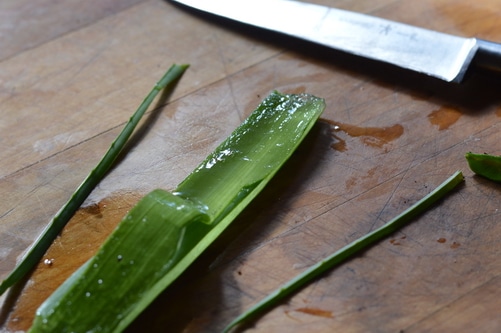
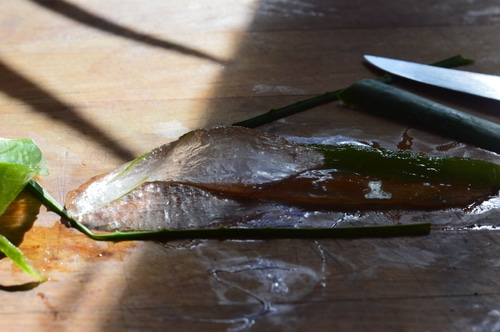
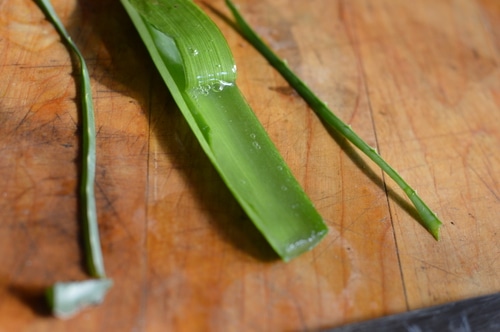
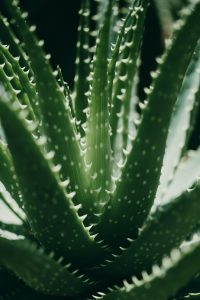

Thank you so much for this valuable information! My 2yr old grandson has an open area of skin caused by itching that was diagnosed as eczema. Could the clear gel be applied on skin even though open?
I rubbed the Aloe vera gel on my skin (frequently etching with red sore) and got complete relief after single use.
it is good plants and so much grow in our area.